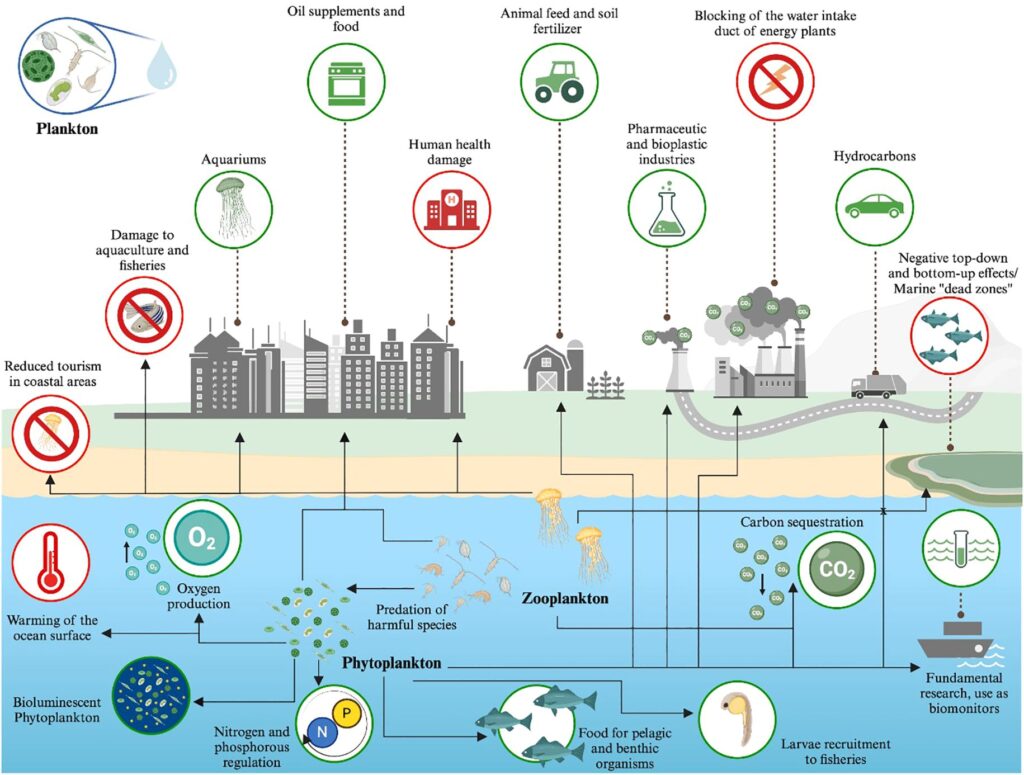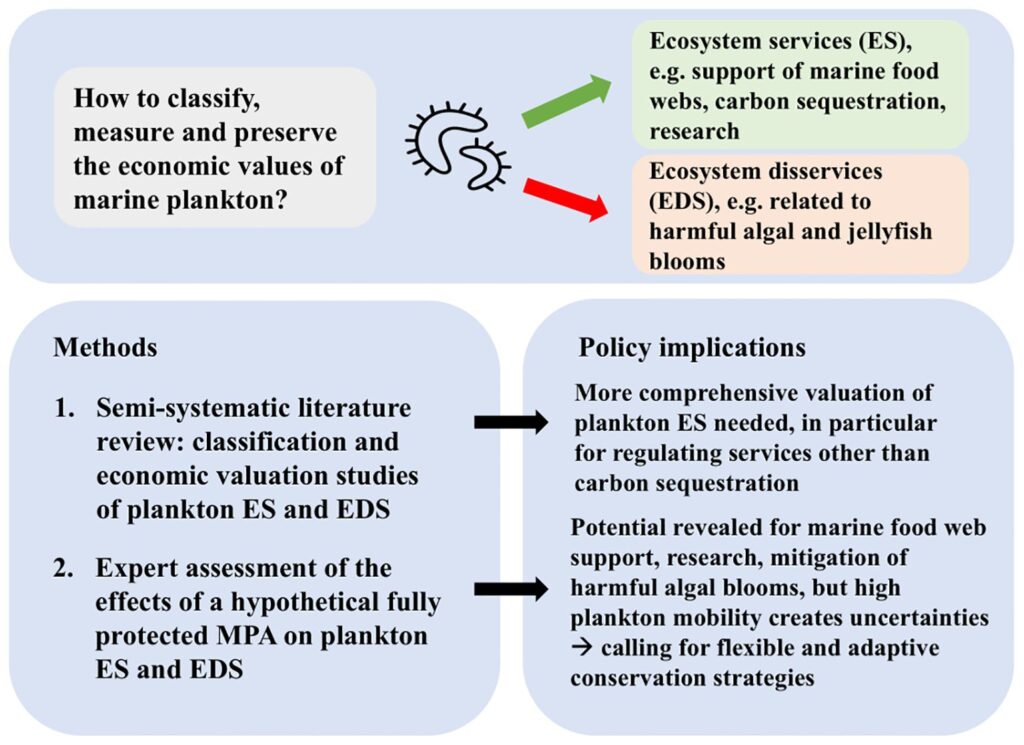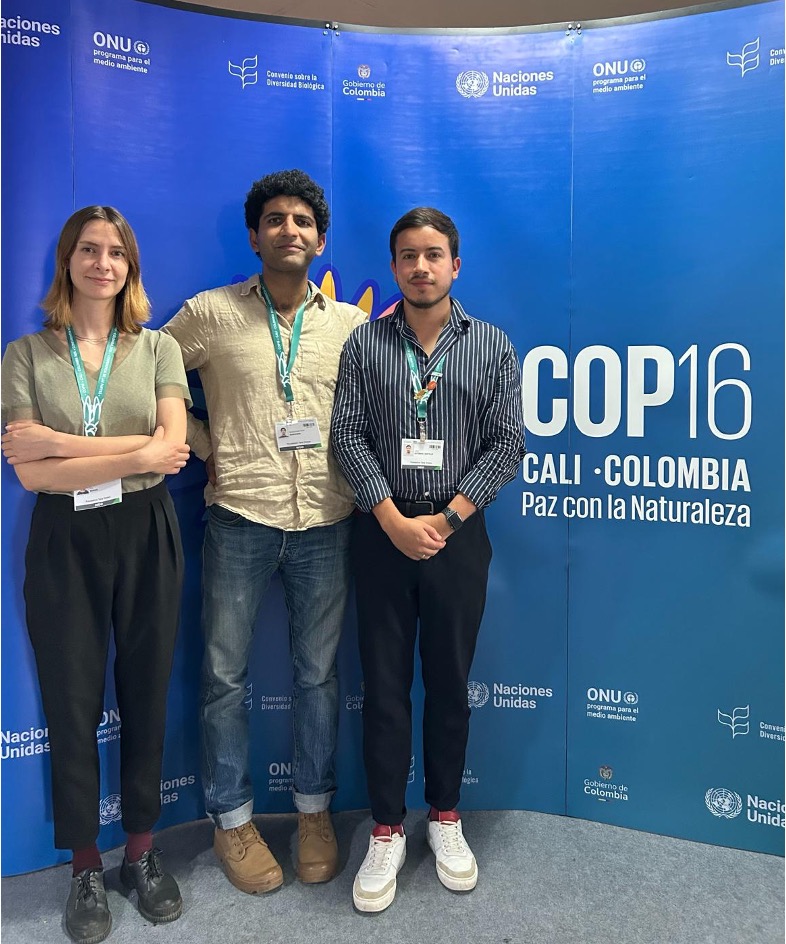The essential role of nature for human life can be conceptualised through Ecosystem Services (ES) and Ecosystem Disservices (EDS), which describe the many positive and negative contributions – both direct and indirect – that ecosystems make to human well-being and quality of life. Although challenging, estimating the economic value of these services helps highlight their importance and supports more informed, sustainable decision-making.
Plankton – drifting organisms ranging in size from microscopic viruses to krill and jellyfish – form a cornerstone of Earth’s largest ecosystem, our Ocean. Yet until recently, research on plankton ecosystem services, disservices and their economic value has been limited. “There are several reasons for this,” explains Eva Wanek, BIOcean5D postdoctoral researcher at the Institut Jean-Nicod in Paris, France. “Planktons’ enormous diversity, the difficulty of valuing the supporting services they provide – such as forming the base of the food chain that underpins the economic value of fisheries – and a historical focus on larger, more visible marine species have all contributed. However, we are now seeing a shift towards a more holistic approach to studying marine ecosystems, exemplified by projects such as BIOcean5D.”
 Visual representation of marine plankton ES (green) and EDS (red). Credit: Figure 3 of ‘Valuing marine plankton: a review of ecosystem services and disservices and an expert assessment of the potential of area-based protection’, Eva Wanek et al., Frontiers in Marine Science, July 2025, doi: 10.3389/fmars.2025.1607996
Visual representation of marine plankton ES (green) and EDS (red). Credit: Figure 3 of ‘Valuing marine plankton: a review of ecosystem services and disservices and an expert assessment of the potential of area-based protection’, Eva Wanek et al., Frontiers in Marine Science, July 2025, doi: 10.3389/fmars.2025.1607996
Bridging science and policy
Eva’s research focuses on the economic value of plankton and how that value can be preserved through marine conservation, contributing to BIOcean5D’s work assessing the values and rights of marine ecosystems for improved protective strategies. A first step in this effort was a review of existing studies. “What we found is that, although plankton ecosystem services – such as oxygen production and carbon absorption – are increasingly recognised and classified, their economic valuation remains limited,” explains Eva. “In contrast, plankton ecosystem disservices – such as harmful algal or jellyfish blooms that deplete oxygen levels, release toxins and negatively impact marine life and human activities – have been less systematically classified, yet their economic impacts have been more extensively quantified.”
 Credit: Graphical abstract of ‘Valuing marine plankton: a review of ecosystem services and disservices and an expert assessment of the potential of area-based protection’, Eva Wanek et al., Frontiers in Marine Science, July 2025, doi: 10.3389/fmars.2025.1607996
Credit: Graphical abstract of ‘Valuing marine plankton: a review of ecosystem services and disservices and an expert assessment of the potential of area-based protection’, Eva Wanek et al., Frontiers in Marine Science, July 2025, doi: 10.3389/fmars.2025.1607996
The growing recognition of the importance of marine plankton underscores their relevance for policy-making. However, a knowledge gap exists about how such policies affect plankton ecosystem services and disservices. To address this, Eva, together with colleagues Julian Esteban-Cantillo and Sacha Bourgeois-Gironde, developed an expert assessment tool to evaluate the expected impacts of marine policies, drawing on quantitative indicators identified from the preceding review of research.
To demonstrate its applicability, the tool was used to evaluate the potential impact that establishing a hypothetical, fully protected, static marine protected area (MPA) in Europe would have on plankton ecosystem services and disservices. Expert assessment was provided by 19 BIOcean5D marine scientists, including 8 plankton specialists, during a dedicated workshop at the project’s General Assembly in February 2025. “BIOcean5D brings together multidisciplinary expertise and our workshop assessment channelled that diverse knowledge toward a central question for society: how does one of the most widely used strategies in marine conservation affect plankton ecosystem services and disservices?” explains Eva.
 BIOcean5D ECRs (from left to right): Eva Wanek, Umer Gurchani and Julian Esteban-Cantillo at 2024 UNCBD COP16, Cali. Credit: Julian Esteban-Cantillo
BIOcean5D ECRs (from left to right): Eva Wanek, Umer Gurchani and Julian Esteban-Cantillo at 2024 UNCBD COP16, Cali. Credit: Julian Esteban-Cantillo
Insights and future directions
The results highlight both the potential and limitations of static MPAs as conservation tools. “Plankton, along with their ecosystem services and disservices, are highly dynamic across space and time,” explains Eva. “This calls for more integrated, flexible and adaptive approaches to conservation within marine policy and management.”
More broadly, the work showcases the value of interdisciplinary collaboration – linking highly specialised expertise in marine plankton with economic valuation to address societally relevant questions. Eva herself reflects this approach: with a background in economics and a PhD in environmental valuation, her work within BIOcean5D has added knowledge of marine ecosystems and biodiversity. “Discovering the world of plankton and connecting it to economic valuation has been fascinating,” says Eva. “I hope to continue working at the intersection of natural and social sciences, contributing to policies that support both human well-being and healthy ecosystems.